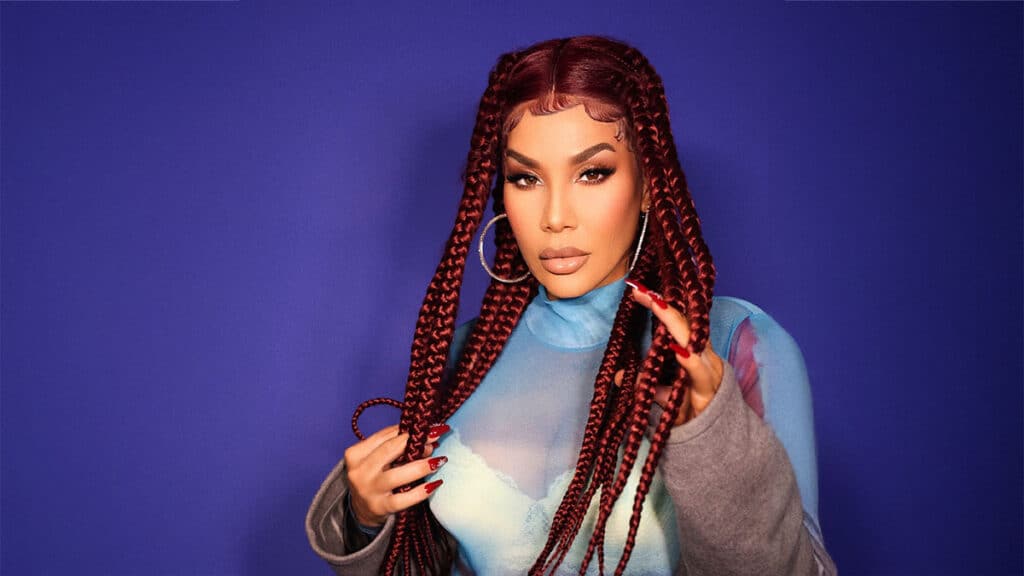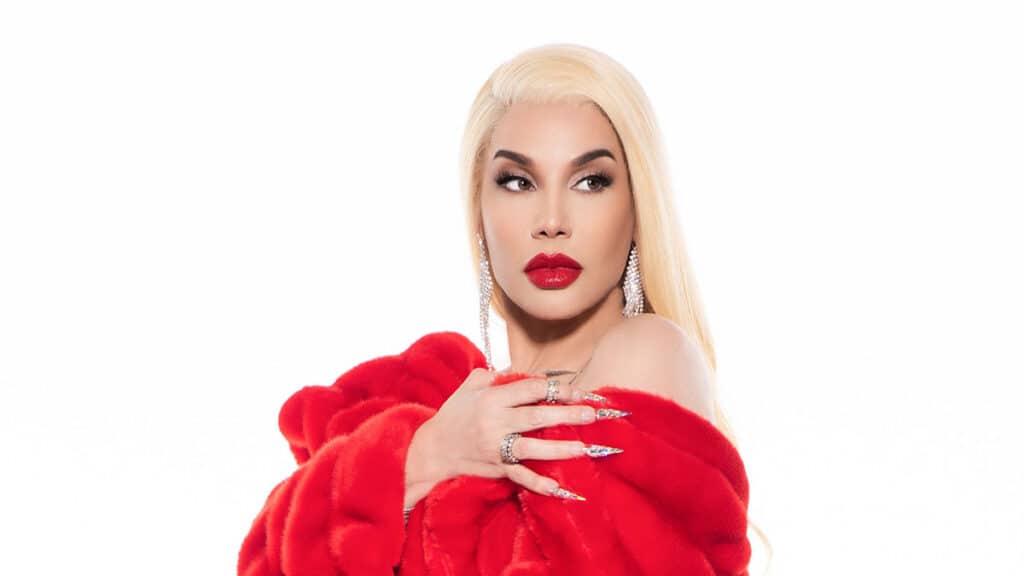
Ivy Queen La Diva is “The Queen of Reggaeton.” She is also known as “La Caballota” (The Big Horse). Her nickname “La Diva” is obvious, but we think “La Caballota” is a feminization of “caballero” which means a respected gentleman in Spanish. In reggaeton and urban music, she is a respected woman, just the biggest one.
The Puerto Rican urban singer is one of the genre’s pioneers. Active since 1995, she opened the road and influenced many great female singers who came after her, in all genres. Today, all urban roads have become The Queen’s roads. 🇵🇷
Ivy Queen in New York City
Carnegie Hall
Ivy Queen La Diva, the Puerto Rican “Queen of Reggaeton, makes her Carnegie Hall debut; on the Stern Auditorium / Perelman Stage in Midtown, Manhattan; on Wednesday, November 20, 2024 at 8pm. From $42. 🇵🇷
Get tickets at carnegiehall.org
New York City Venues
Ivy Queen
Martha Ivelisse Pesante Rodríguez was born in in 1972, in Añasco, a small town in western Puerto Rico, between Rincon and Mayagüez. The town has a tradition of strong women. Mariana Bracetti, who knitted Puerto Rico’s first independence flag, used in the “El Grito de Lares” uprising, is from there too.
Tough as New York City
Rodríguez moved to New York City as a child and was raised here. Watching Celia Cruz, “The Queen of Salsa,” in the legendary 1974 Fania All-Stars concert in Congo inspired Martha to make her own music. She was struck by how much men respected Celia, “The Queen of Salsa,” and loved Celia’s glittery over-the-top costumes which are inspired by Caribbean Carnival. Both Celia and Ivy have big powerful voices.
She grew up listening to New York hip hop artists like Wu-Tang Clan, Nas, and Biggie Smalls, all great poets. Martha credits her ability to compete and win in a man’s world to her New York City upbringing. The streets of New York are beautiful, but they are also tough.
Hip hop has Caribbean roots and with reggaeton shares the poetry that is enabled by creole or criollo forms of speaking. Creole languages are created naturally by children whose parents speak different languages. The new language blends and stretches words in ways that native speakers can’t. That’s part of the magic of both hip hop and reggaeton. And most Puerto Ricans who speak English, naturally speak Spanglish which brings Spanish words into English, and English words into Spanish.
A Reggaetonera Before It was Reggaeton
The reggaeton story starts with reggae in Jamaica, which came to Panama with Jamaican Panama Canal workers. It continued there in pregones (selling songs) on wawas (working people’s buses), and was brought to New York City by Panamanian students. One of the originators, El General, noticed that fans got more excited when he rapped in Spanish than in Jamaican Patois, so he gave his fans what they wanted.
Puerto Rican rapper Vico C started rapping in Spanish in 1985. When he moved from Brooklyn to San Juan, he brought rap’s mixtape culture with him to the caserios (public housing) in Puerta de Tierra, San Juan. That’s still a hard place that locals pass through quickly, but Latin culture always begins in the most disadvantaged barrios. People of a certain age will remember the Puerto Rican government’s attempts to ban reggaeton. It was considered rebellious, violent, and obscene and Puerto Ricans are socially conservative. That’s youth culture. Now Puerto Rico claims reggaeton as its own.
Martha got started in music with The Noise, a Puerto Rican collective that was rapping in Spanish. She invited herself to their studio in San Juan and said she had a song called, “Somos Raperos, Pero no Delincuentes” (We are rappers, not delinquents). DJ Negro, who with Vico C was one of the earliest Puerto Rican reggaetoneros was part of that crew. Though Ivy was shy, she sang her song to him with her back turned, he saw something in her. It was 1995.
Unlike some of the other Caribbean islands, Puerto Rico has native rock and reggae, so that is part of Puerto Rico’s sound. Today in Puerto Rico, elders dance salsa, and the young dance rock or reggaeton. We also have native merengue. Everyone sings plena, and many young people dance bomba. In the central mountains, Puerto Rico also has a trovadore tradition of improvisational poetry. Trovadores battle just like rap battles. We have no idea who was first, the trovadores or the rappers, but both do the same thing. Rumba, bomba, and plena singers also improvise and compete with each other, so Puerto Rico has many native traditions that are similar to rap.
Hip hop was created by Black kids in the Bronx, but some of those kids were Afro-Puerto Ricans. And the Puerto Rican kids brought their parents’ Palladium Ballroom rumba moves into break dancing. So The Queen has lots of good genes.
E-V Queen
If you come up from the streets, you have your given name and a street name. Names in the Caribbean often have Indigenous or African roots, which most Americans find hard to pronounce and remember, so many people shorten and simplify their names. Martha’s stage name “Ivy Queen” comes from her middle name Ivelisse. The Queen part pays homage to the LGBTQ+ community which always loved her shows. That’s important because though Puerto Rico has a vibrant LGBTQ+ culture, being out can be dangerous. That takes courage and care. In Spanish, “i” is pronounced like the English letter “e,” so her name is pronounced “E-V Queen.” On Caribbean streets, it’s “E-V Quee.”
She Lifted Herself Up
Today, there are many great reggaetoneras and everyone wants to sing with The Queen, but when she started, Latin women generally didn’t become musicians, especially in rap or reggaeton. People tried to discourage her and wouldn’t help, so she worked in a factory to make the money to record her first demos. A born singer has to sing, and a born Queen will be a Queen, no matter what. Actually every woman has an inner queen. She just has to find it, and not let anyone keep it down.
Ivy does her makeup, nails, hair, and clothes like many women in the barrios of the world. Some think it is silly without understanding how important that is. Most of the world is poor and it’s not their fault. Even if you have nothing, a smart woman has her body and mind, and takes good care of both. The women are very competitive. Ivy does her beauty thing, but unlike many of today’s artists, image alone was never the main reason to listen to her. If you look past her beauty, Ivy always has something to say.
She is very conscious of the power of her image, and her responsibility to it. Now Ivy is an inspiration to thousands of women young and old. We are struck by how much support Ivy Queen gives to the younger generations. Giving back is the mark of true genius. Her message is that you don’t have to be anyone else, you just have to be yourself. Ignore the external noise and never look back. Believe in yourself, keep moving forward, and create your own destiny. She did.
On the rap side of things, Ivy recalls Queen Latifah, who started rapping with a mature woman’s point of view with “All Hail the Queen” in 1989. Both artists have made their mark alongside Celia Cruz as female music icons. Now there are many, but they were some of the first.
Quiero Bailar (I Want to Dance)
Like all Latin cultures, Puerto Rico still has machista (male-chauvinist) culture. It’s very wrong and old-fashioned, but in that way of thinking woman are considered property and only supposed to take care of home and children. It’s a little hard to figure out because Caribbean women are also very strong. It’s only beginning to change now with the young generation, but men are still some catching up to do. Anyway, Ivy defined her identity against this machista culture. That shined through in her 2002 feminist anthem “Quiero bailar.” This was before Daddy Yankee’s hit “Gasolina” brought reggaeton to the world, in 2004, so Ivy Queen really was a pioneer.
The reggaeton dance is perreo, which at its most basic is bending over and rubbing your butt on your partner. A really good perreo dancer can make her cheeks fly like they have minds of their own. From a dancer’s point of view, it’s beautiful to watch such talent. Many people think perreo comes from Puerto Rico, but the dance originates in many cultures of Mother Africa as a woman’s coming of age tradition. She dances alone or with a group of women in front of the community to show that she is healthy, vibrant, and ready to start a family.
As Caribbean dancers, we have noticed that the European Diaspora is uptight about hips and sexuality, but the African Diaspora is not. It’s more natural like eating and sleeping. As Celia Cruz sang, “La negra tiene tumbao.” Tumbao is the natural swing in an African or Diasporic woman’s hips. She’s not putting it on for show, it’s real. It’s also the swing in the blues and its descendants: jazz, folk, country, rock, hip hop, and trap. As world music icon David Byrne once said, “The world moves on a woman’s hips.” He was talking about African Diaspora women.
“Quiero Bailar” is about how dancing perreo in a club doesn’t mean a woman wants to sleep with you, which is what a lot of guys think. In the club, girls just want to have fun. Perreo at home, well that’s another thing, but in the club, let the woman lead and just enjoy. When she’s done, it’s done. Respect.
And that’s the one word that sums up The Queen. In reggaeton, there is before Ivy Queen and after. She demanded respect before anyone would give it, and then she earned it. Now everyone wants to be with The Queen because without respect, we have nothing.
All Hail the Queen: Ivy Queen
Ivy Queen’s recognition outside the Puerto Rican and reggaeton communities is part of a broader cultural shift that is reevaluating and recognizing women’s important contributions to the arts. It started in New York City’s visual arts community around 2015-2016 as art historians began to acknowledge that great modern art wasn’t only made by European men at the beginning of the 20th century. It was made by artists of all cultures, genders, and across a broader time frame.
The recognition doesn’t come free. It’s coming now because women earned it. Today creative women are doing more interesting work than a lot of men. Men are a little confused right now because the toxic masculinity our cultures teach us has failed us all. Many female artists were overlooked in the past, but you can’t ignore greatness. Artists like Celia Cruz, La Lupe, Queen Latifah, Elizabeth Catlett, Hilma af Klint, Frida Kahlo, and many others opened the road with their talent and determination. Now they are getting the recognition they deserve. We have noticed that around the world and across time, women are the guardians of culture, and culture is what makes us human. So all hail the queen: Ivy Queen.

X @IvyQueenDiva
Instagram @ivyqueendiva
YouTube @IvyQueenLaDiva
